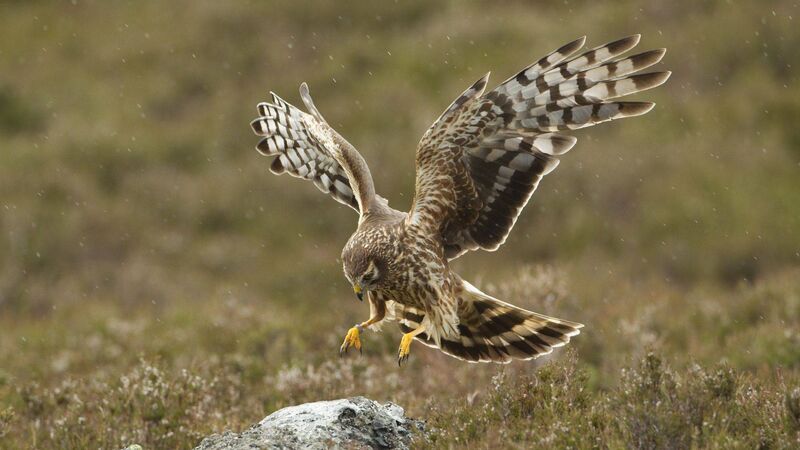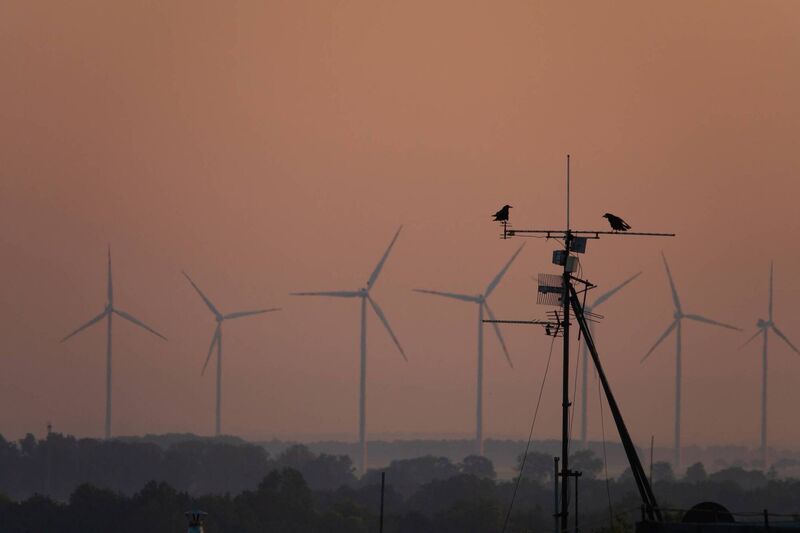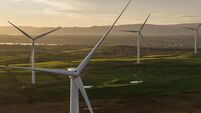We’re for the birds — project to protect hen harriers

A striking image of an adult female hen harrier. The SEAI-funded project, RE:HARRIER, is bringing together researchers, academics and environmentalists to work with the wind energy industry to protect this endangered bird. Photo: Mark Hamblin
As the iconic Irish hen harrier edges closer to extinction an innovative SEAI-funded project, RE:HARRIER, is bringing together researchers, academics and environmentalists to work with the wind energy industry to find solutions.
In recent years wind farms have increasingly, and successfully, been designed to accommodate local hen harrier populations.
On one wind farm, between 2018 and 2023, hen harriers fledged in five of the six monitored breeding seasons within 600 metres of wind turbines. Another wind farm welcomes back the same breeding pair every year who nest as close as 250 metres to an operational wind turbine which is switched off as soon as they appear.
The male hen harrier is a distinctive bird with grey-blue feathers whose wings form a loose V-shape when seen, fascinating, in flight. The female is larger and darker coloured. They have long wings. They need open spaces — bogland, scrubland and rough grassland – in which to hunt for food.
They build their nests on the ground, concealed by heather, around April. Their newborn chicks are at risk from predators like badgers, pine martens and foxes but it is human activity that has been their greatest threat for the past two centuries.
Hen harriers were once widespread across the Irish landscape, but the areas in which they can thrive have become increasingly restricted, due to the loss and degradation of suitable habitats.
Though fairly common at the start of the last century they faced extinction by the 1950s. They were saved by the State’s large-scale afforestation scheme in the 1960s that initially created vast open spaces in which, coincidentally, the hen harrier could nest and hunt. In the 1970s there were about 300 breeding pairs, more than three times what we have today.
But as the trees grew and other scrubland was cleared for agricultural use that changed, the birds lost habitat, the now tall forests became home to species which prey on the hen harrier and those wide wings are not suited to flying between trees to forage for food. Once again the hen harrier went into decline, which in recent years appears to be accelerating.

According to the most recent survey of the Irish hen harrier population, carried out in 2022, the population had fallen by a third in just seven years and is now hovering on the edge of extinction. There are only 85 confirmed breeding pairs in Ireland with, most optimistically, another 21 possible pairs.
By the time Ireland’s first onshore wind farm was built at Bellacorrick in County Mayo in 1992 hen harriers were already a species under threat. The narrative that onshore wind development is one of the top drivers of hen harrier population collapse is not supported by science nor data. Hen harriers can co-exist, and even thrive, alongside wind farms.
But a more accurate understanding of wind farm effects on the hen harrier is needed to inform and to improve best practice to ensure wind farm development is compatible with environmental and conservation priorities.
A research project called RE:HARRIER, which is a collaboration between Wind Energy Ireland and MKO Research, funded by the Sustainable Energy Authority of Ireland (SEAI) is currently underway to provide data and understanding to do just that.
The wind energy industry is working to ensure that, while Irish wind farms lead the country’s response to the climate emergency by providing clean, secure, sustainable energy, they are also places where birds, animals and wildlife can thrive and which have a role to play in tackling the global biodiversity crisis.
Over the four-year lifetime of the project, hen harriers will be observed to gain an improved understanding of nest sites, foraging range of the birds and their flight height. It will measure the success of alternative habitats and compile data with a view to encouraging conservation management of the species.
Some of the different approaches it will be looking at include wind farms where hundreds of hectares are actively managed for hen harrier habitat through bilateral agreements with local farmers and via direct purchase.
In some of these projects local landowners are being paid, over 35-40-year leases, to manage their land in a way that supports hen harriers. Initiatives like these manage to support the development of renewable energy, provide a new and steady income stream to family farms and — critically — help to protect hen harrier populations.
The RE:HARRIER project will create evidence-based guidance for use by the wind industry and others to help us all to play our part in ensuring the hen harrier never vanishes from Irish skies.
Find out more about the RE:HARRIER project at info.windenergyireland.com/re-harrier.









